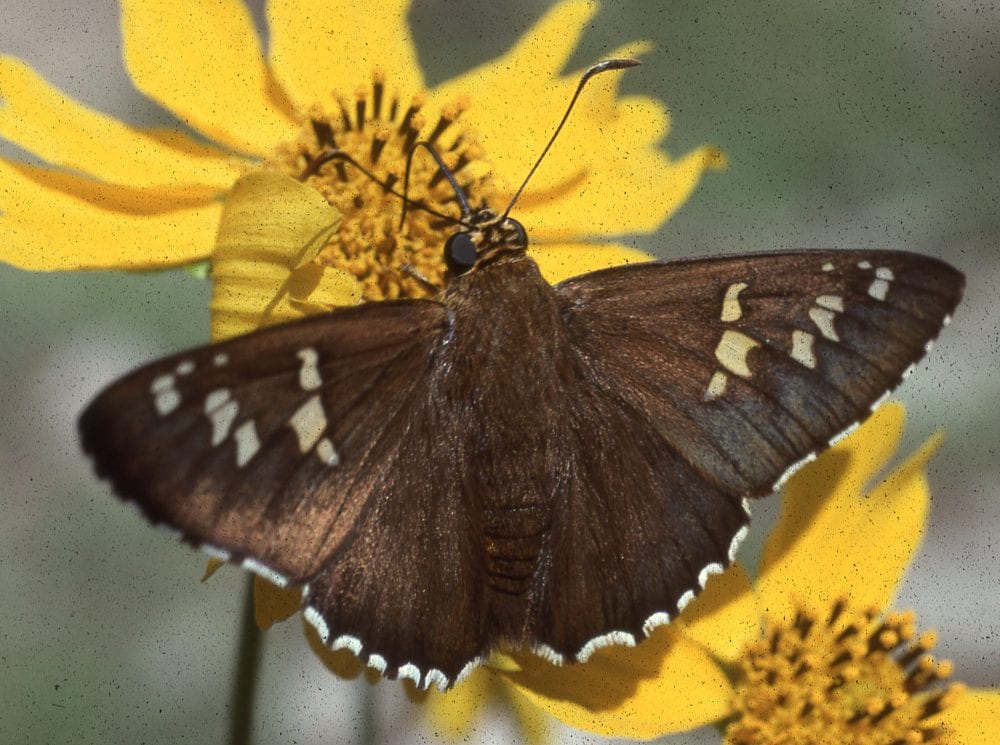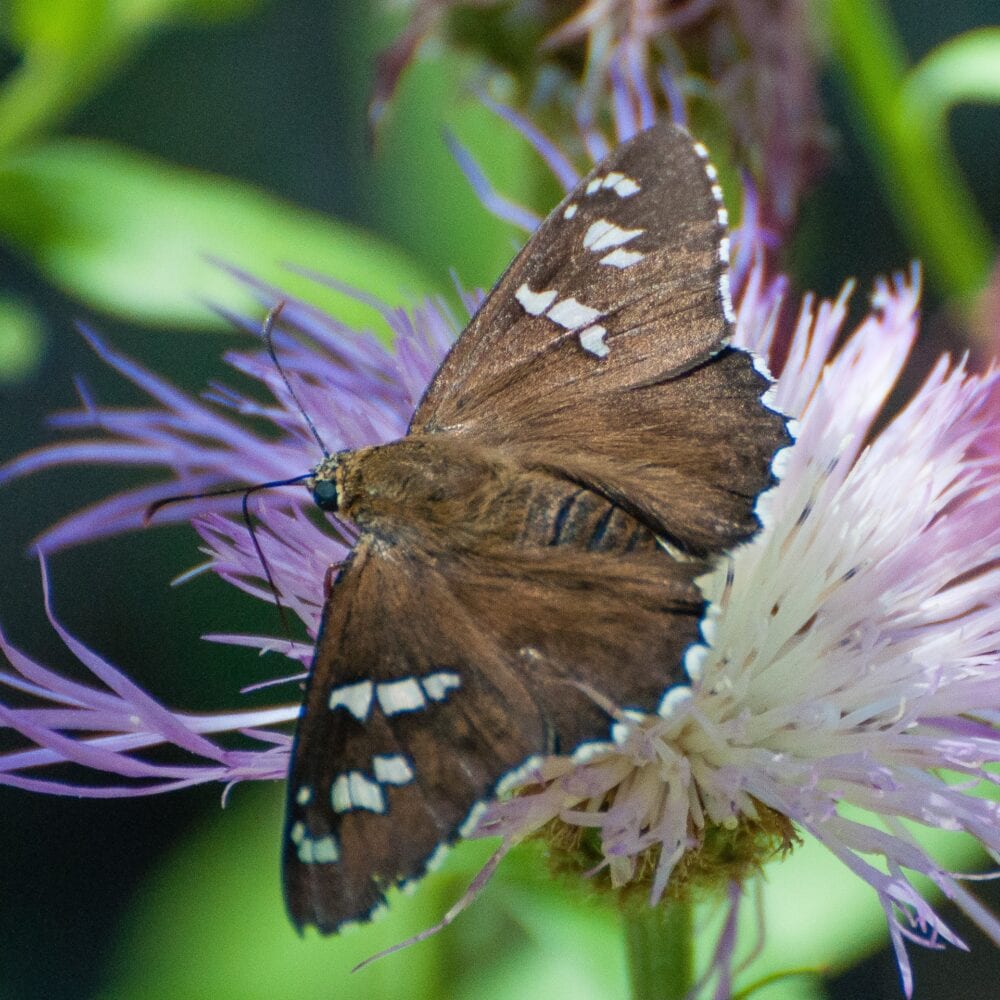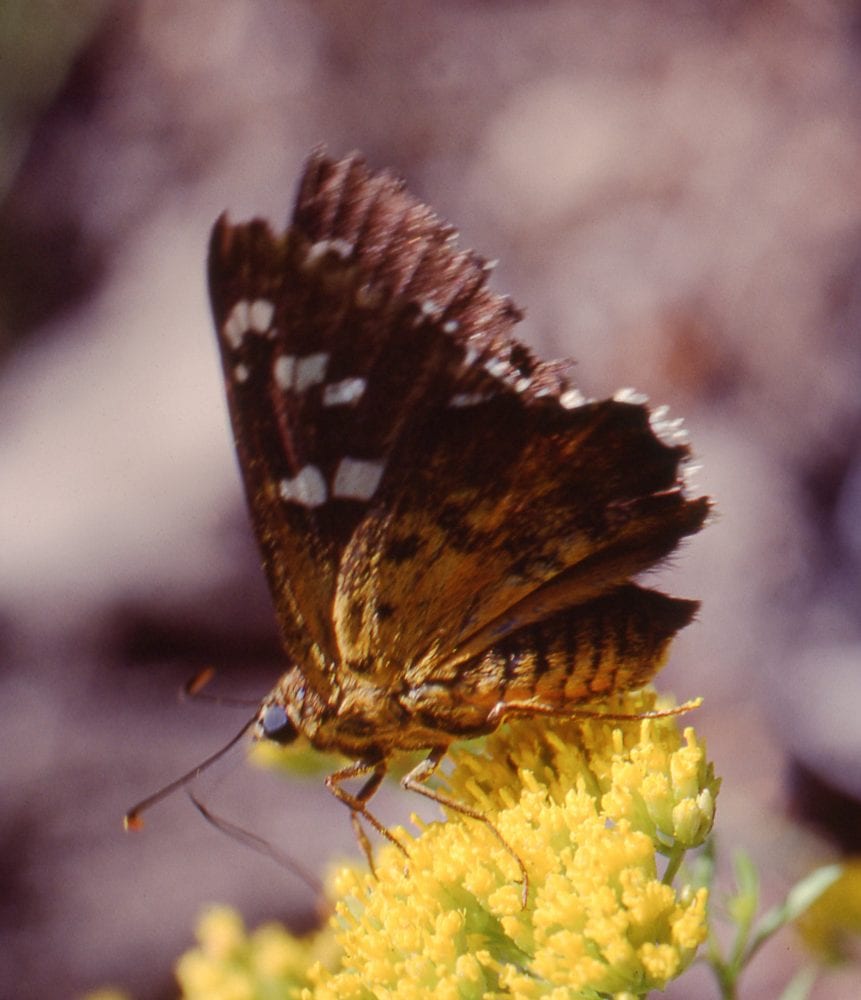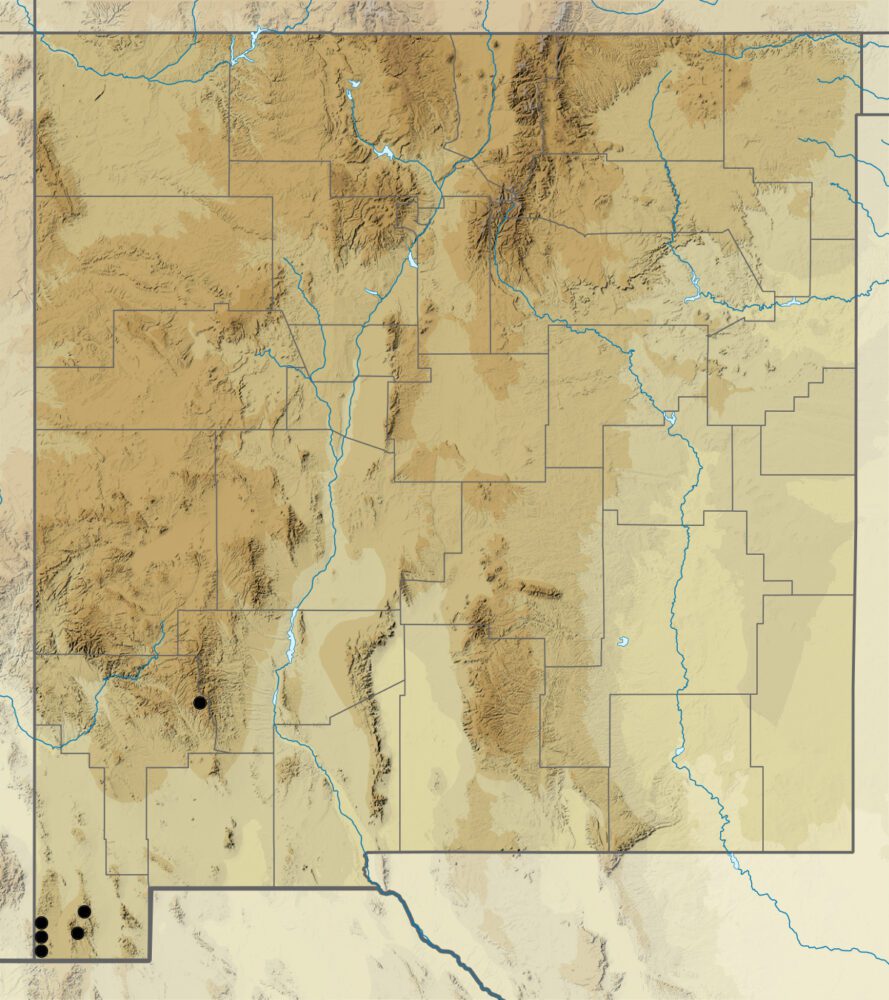by Steven J. Cary and Michael E. Toliver
Skippers (Hesperiidae). About a third of our butterfly fauna, more than 100 species, belongs to this family, which is subdivided into six subfamilies in the US: Eudaminae, Tagiadinae, Pyrrhopyginae, Pyrginae, Heteropterinae, and Hesperiinae. Of those six subfamilies, five are known from New Mexico and the sixth (Tagiadinae, represented by Celaenorrhinus fritzgaertneri) has been taken on the Arizona side of Cottonwood Canyon, Peloncillo Mountains. Therefore, it is likely that eventually all six will be known from our state. The tribe Megathymini has been considered a seventh subfamily, but recent genetic work (Li, et al, 2019) shows it belongs in the Hesperiinae. Skippers earned their name because of their rapid, skipping flight, which is powered by a heavily-muscled thorax. All skippers have antennal clubs that are distinctively bent, curved or hooked. Larvae silk leaves together for nests; larvae overwinter. Most subfamilies have distinct larval food preferences. Updated November 30, 2022
Mimic Skippers (Hesperiidae: Pyrrhopyginae). This group is limited to the American tropics; its members mimic other skippers in appearance, but with distinctive, stoutly-hooked antennal clubs. In New Mexico, our one representative of this family is a resident species that looks and behaves much like members of the Pyrginae. Its English name of ‘Dull Firetip’ is a not-so-subtle clue about the vivid firetips that inhabit more tropical regions farther south.
Apyrrothrix araxes (Hewitson 1867) Dull Firetip (updated August 20, 2022)
Description. Unfortunately named, Dull Firetip is dark brown above with bright hyaline spots on the forewing. The gold-powdered underside and stoutly hooked, golf-club-like antennae are unique among our fauna. Range and Habitat. Dull Firetips are known from Oaxaca, Mexico, northward along the Sierra Madre to southeast Arizona and southwest New Mexico (counties: Gr,Hi). They breed in Upper Sonoran and Transition Zone oak-filled canyons, 4500 to 8000′ elevation. In New Mexico they can be found in the Animas and Peloncillo Mountains of the Bootheel, rarely straying farther north. Life History. Larvae eat foliage of oaks (Fagaceae). Reported hosts include Quercus arizonica (Burns 1964), Quercus emoryi and Quercus oblongifolia (Bailowitz and Brock 1991). Flight. One report from June suggests an occasional late spring or early summer generation, but the rest of our observations fall within the period of August 1 to September 23, coinciding with the summer monsoon season. This butterfly is fully double-brooded in the heart of its range farther south in Mexico. Adults patrol up and down riparian mountain canyons and siphon nectar from Monarda, Baccharis and various composites. Despite its size and competent flight, Apyrrothrix araxes rarely wanders beyond its breeding areas. Comments. Our populations are assigned to subspecies Apyrrothrix araxes arizonae (Godman and Salvin 1893). This butterfly was formerly known as Pyrrhopyge araxes (Opler and Warren 2002).







